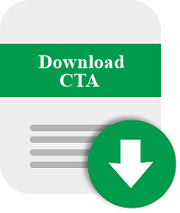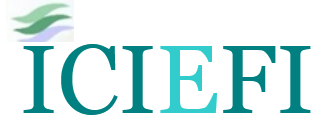Investigating the Determinants of Islamic Banks’ Financing Quality: A Regional Approach
Abstract
The quality of Islamic banks’ financing is pivotal to determine the banking performance. When an Islamic bank has good quality of financing activities, the bank can generate more financial return due to less exposure to bad financing. This study aims to investigate the determinants of Islamic banks’ financing quality by considering the regional approach. The study utilized non-performing financing as the proxy of bank’s quality financing. The dependent variables consisted of inflation, financing growth, financing to deposit ratio, and asset. In addition, dummy variables were used to identify the period of the COVID-19 pandemic and the regional effect in Java and other regions outside Java. By adopting panel data analysis, this study observed 33 provinces in Indonesia from January 2004 to October 2021. The findings of the study revealed that the determinant of Islamic banks’ financing quality in consumption scheme was different from equity and investment schemes. Moreover, only Islamic banks’ financing quality in consumption scheme had exposure to inflation risk. Regional influence was present in all sorts of financing schemes at the time the COVID-19 pandemic significantly impacted financing quality in investment and consumption schemes. This study suggests that Islamic banking practitioners and financial authorities should understand the different behavior of each financing scheme in order to maintain Islamic banks’ financing quality.
Keywords
Full Text:
PDFReferences
Al Wesabi, H. A. H., & Ahmad, N. H. (2013). Credit Risk of Islamic Banks in GCC Countries. The International Journal of Banking and Finance, 10(2), 95–112.
Alandejani, M., & Asutay, M. (2017). Nonperforming loans in the GCC banking sectors: Does the Islamic finance matter? Research in International Business and Finance, 42, 832–854. https://doi.org/10.1016/j.ribaf.2017.07.020
Albaity, M., Noman, A. H. M., Saadaoui Mallek, R., & Al-Shboul, M. (2022). Cyclicality of bank credit growth: Conventional vs Islamic banks in the GCC. Economic Systems, 46, 100884. https://doi.org/10.1016/j.ecosys.2021.100884
Anto, M. H., Fakhrunnas, F., & Tumewang, Y. K. (2022). Islamic banks credit risk performance for home financing: Before and during Covid-19 pandemic. Economic Journal of Emerging Markets, 14(1), 113–125. https://doi.org/10.20885/ejem.vol14.iss1.art9
Bilgin, M. H., Danisman, G. O., Demir, E., & Tarazi, A. (2021). Bank credit in uncertain times: Islamic vs. conventional banks. Finance Research Letters, 39(2020), 1–7. https://doi.org/10.1016/j.frl.2020.101563
Boyd, J. H., Levine, R., & Smith, B. D. (2001). The impact of inflation on financial sector performance. Journal of Monetary Economics, 47(2), 221–248. http://www.sciencedirect.com/science?_ob=ArticleURL&_udi=B6VBW-433P81V-2&_user=1547238&_coverDate=04/30/2001&_rdoc=1&_fmt=high&_orig=search&_origin=search&_sort=d&_docanchor=&view=c&_acct=C000053647&_version=1&_urlVersion=0&_userid=1547238&md5=0aa6b0f9f51
Castro, V. (2013). Macroeconomic determinants of the credit risk in the banking system: The case of the GIPSI. Economic Modelling, 31(1), 672–683. https://doi.org/10.1016/j.econmod.2013.01.027
Chiaramonte, L., Dreassi, A., Girardone, C., & Piserà, S. (2022). Do ESG strategies enhance bank stability during financial turmoil? Evidence from Europe. European Journal of Finance, 28(12), 1173–1211. https://doi.org/10.1080/1351847X.2021.1964556
Contreras, S., Ghosh, A., & Hasan, I. (2023). The effect of bank failures on small business loans and income inequality. Journal of Banking and Finance, 146. https://doi.org/10.1016/j.jbankfin.2022.106690
Dia, E., & VanHoose, D. (2017). Banking in macroeconomic theory and policy. Journal of Macroeconomics, 54, 149–160. https://doi.org/10.1016/j.jmacro.2017.07.009
Elnahass, M., Trinh, V. Q., & Li, T. (2021). Global banking stability in the shadow of Covid-19 outbreak. Journal of International Financial Markets, Institutions and Money, 72, 101322. https://doi.org/10.1016/j.intfin.2021.101322
Fakhrunnas, F., Astuti, R. D., & Anto, M. B. H. (2022). Determinants of non-performing financing in Indonesian Islamic banks: A regional and sectoral analysis. Banks and Bank Systems, 17(4), 72–86. https://doi.org/10.21511/bbs.17(4).2022.07
Fakhrunnas, F., Nugrohowati, R. N. I., Haron, R., & Anto, M. B. H. (2022). The Determinants of Non-Performing Loans in the Indonesian Banking Industry: An Asymmetric Approach Before and During the Pandemic Crisis. SAGE Open, 12(2), 1–13. https://doi.org/10.1177/21582440221102421
Fakhrunnas, F., Tumewang, Y. K., & Anto, M. B. H. (2021). The impact of inflation on Islamic banks’ home financing risk: Before and during the COVID-19 outbreak. Banks and Bank Systems, 16(2), 78–90. https://doi.org/10.21511/bbs.16(2).2021.08
Ghenimi, A., Chaibi, H., & Omri, M. A. B. (2017). The effects of liquidity risk and credit risk on bank stability: Evidence from the MENA region. Borsa Istanbul Review, 4(17), 238–248. https://doi.org/10.1016/j.bir.2017.05.002
Hassan, M. K., Khan, A., & Paltrinieri, A. (2019). Liquidity risk, credit risk and stability in Islamic and conventional banks. Research in International Business and Finance, 48, 17–31. https://doi.org/10.1016/j.ribaf.2018.10.006
Ibrahim, M. H., & Law, S. H. (2019). Financial intermediation cost in dual banking system; The role of Islamic banking. Bulletin of Monetary Economics and Banking, 22(4), 529–550.
ICD-Refinitiv. (2022). ICD-Refinitiv Islamic Finance Development Report 2022; Embracing Change. https://www.refinitiv.com/en/resources/special-report/islamic-finance-development-report-2022
Kabir, M. N., Worthington, A., & Gupta, R. (2015). Comparative credit risk in Islamic and conventional bank. Pacific Basin Finance Journal, 34, 327–353. https://doi.org/10.1016/j.pacfin.2015.06.001
Khattak, M. A., Hamid, B. A., Islam, M. U., & Ali, M. (2021). Competition, diversification, and stability in the Indonesian banking system. Buletin Ekonomi Moneter Dan Perbankan, 24(Special Issue), 59–88. https://doi.org/10.21098/BEMP.V24I0.1481
Kim, H., Batten, J. A., & Ryu, D. (2020). Financial crisis, bank diversification, and financial stability: OECD countries. International Review of Economics and Finance, 65, 94–104. https://doi.org/10.1016/j.iref.2019.08.009
Lee, S. P., & Isa, M. (2017). Determinants of bank margins in a dual banking system. Managerial Finance, 43(6), 630–645. https://doi.org/10.1108/MF-07-2016-0189
Louati, S., Louhichi, A., & Boujelbene, Y. (2016). The risk-capital-efficiency trilogy: A comparative study between Islamic and conventional banks. Managerial Finance, 42(12), 1226–1252. https://doi.org/10.1108/MF-01-2016-0009
Louhichi, A., & Boujelbene, Y. (2016). Credit risk, managerial behaviour and macroeconomic equilibrium within dual banking systems: Interest-free vs. interest-based banking industries. Research in International Business and Finance, 38, 104–121. https://doi.org/10.1016/j.ribaf.2016.03.014
Misman, F. N., Bhatti, I., Lou, W., Samsudin, S., & Rahman, N. H. A. (2015). Islamic Banks Credit Risk: A Panel Study. Procedia Economics and Finance, 31(15), 75–82. https://doi.org/10.1016/S2212-5671(15)01133-8
Moore, J., & Kiyotaki, N. (1997). Credit Cycles. Journal of Political Economy, 105(2), 211–248.
OJK. (2014). Peraturan Otoritas Jasa Keuangan Nomor /POJK.05/2014 tentang Penyelenggaraan Usaha Perusahaan Pembiayaan. Retrieved from https://www.ojk.go.id/Files/201409/2DraftPOJKPenyelenggaraanUsaha_1410445981.pdf
OJK. (2021). Statistik Perbankan Syariah. Retrieved from https://www.ojk.go.id/id/kanal/syariah/data-dan-statistik/statistik-perbankan-syariah/Pages/Statistik-Perbankan-Syariah---Desember-2020.aspx
Priyadi, U., Utami, K. D. S., Muhammad, R., & Nugraheni, P. (2021). Determinants of credit risk of Indonesian Sharīʿah rural banks. ISRA International Journal of Islamic Finance, 13(3), 284–301. https://doi.org/10.1108/IJIF-09-2019-0134
Rizvi, S. A. R., Narayan, P. K., Sakti, A., & Syarifuddin, F. (2020). Role of Islamic banks in Indonesian banking industry: an empirical exploration. Pacific Basin Finance Journal, 62(101117), 1–10. https://doi.org/10.1016/j.pacfin.2019.02.002
Susamto, A. A., Octavio, D. Q., & Wardani, D. T. K. (2021). Benchmarking the Intermediation Costs of Islamic and Conventional Banks: Evidence from Indonesia. Journal of Economic Cooperation and Development, 42(3), 91–118.
Trad, N., Trabelsi, M. A., & Goux, J. F. (2017). Risk and profitability of Islamic banks: A religious deception or an alternative solution? European Research on Management and Business Economics, 23(1), 40–45. https://doi.org/10.1016/j.iedeen.2016.09.001
Trinugroho, I., Risfandy, T., & Ariefianto, M. D. (2018). Competition, diversification, and bank margins: Evidence from Indonesian Islamic rural banks. Borsa Istanbul Review, 18(4), 349–358. https://doi.org/10.1016/j.bir.2018.07.006
Widarjono, A., Anto, M. B. H., & Fakhrunnas, F. (2020). Financing risk in Indonesian Islamic rural banks: Do financing products matter? Journal of Asian Finance, Economics and Business, 7(9), 3005–3314. https://doi.org/10.13106/JAFEB.2020.VOL7.NO9.305
DOI: https://doi.org/10.18196/ijief.v7i1.18532
Refbacks
- There are currently no refbacks.
Copyright (c) 2024 International Journal of Islamic Economics and Finance (IJIEF)

This work is licensed under a Creative Commons Attribution-ShareAlike 4.0 International License.
International Journal of Islamic Economics and Finance (IJIEF)
International Program for Islamic Economics and Finance
Department of Economics
Faculty of Economics and Business
Universitas Muhammadiyah Yogyakarta
Pascasarjana Building, Ground Floor
Jl. Brawijaya (Ringroad Selatan), Kasihan, Bantul
D.I. Yogyakarta 55183, INDONESIA
Official email: ijief@umy.ac.id












1.jpg)